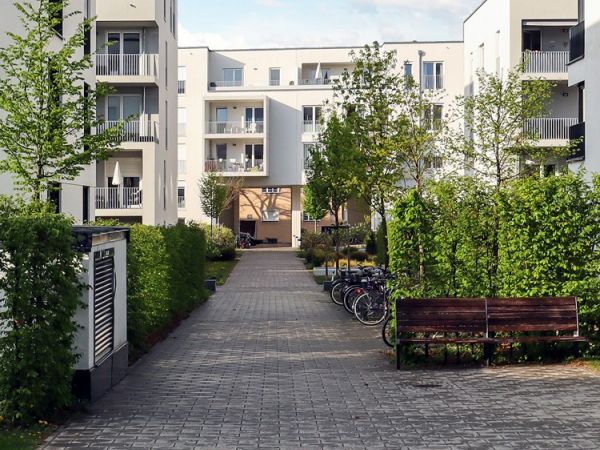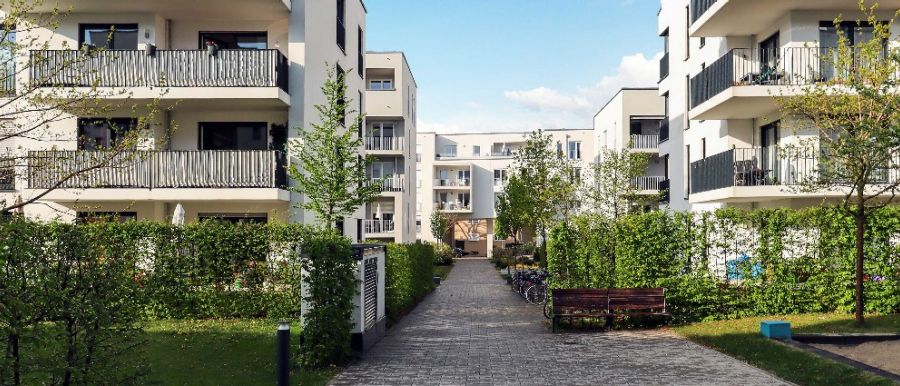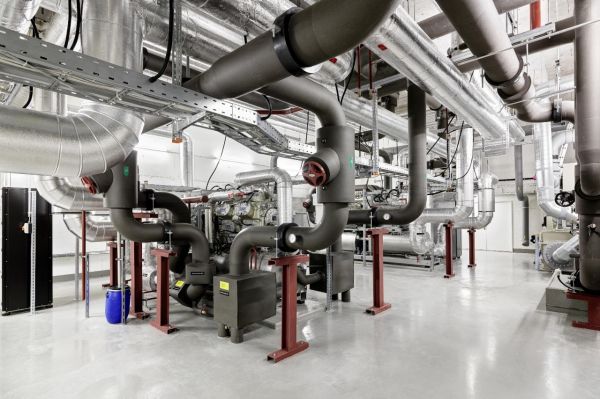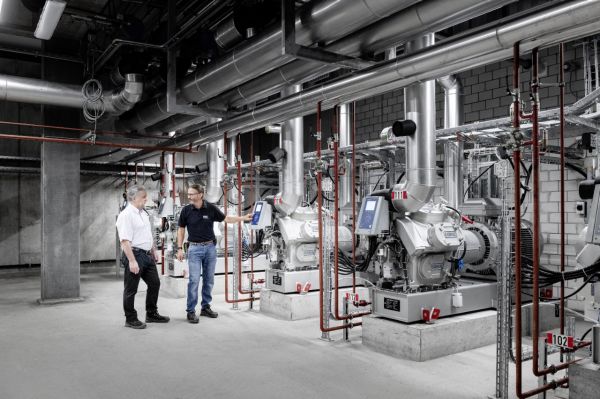

Heat pumps are one of the key technologies on the way to net zero. However, more than half of residential buildings in Switzerland are still heated with fossil fuels. In order to advance the transformation of the heat supply, fossil-fuel systems must be gradually replaced by renewable ones. The sharp increase in sales of heat pumps in recent years shows that this development gaining steam: since 2000, the number of installed systems has increased more than sixfold and stood at 447,700 in 2023. By 2050, about 1.5 million systems are expected to be in operation.
Heat pumps are among the most environmentally friendly technologies for comfort heating and cooling in buildings. With 20 to 35 per cent electricity and 65 to 80 per cent ambient heat, they generate 100 per cent usable energy. In recent years, the systems have made a leap in efficiency of 20 to 30 per cent, and the numbers are likely to continue to rise in the future – thanks in part to new control technology.
Heat pumps are a good choice
Heat pumps can be optimally operated in properties with high-quality insulation and panel heating systems such as underfloor heating, where flow temperatures of around 30 °C are sufficient. The temperature increase is minimal and the power requirement for operation is low, so the system achieves a high degree of efficiency. Heat pumps are also a good choice in older, less well-insulated properties with radiators. However, flow temperatures of 60 °C and more are required. Today, many heat pump manufacturers offer products that are designed for such flow temperatures and operate efficiently. So heat pumps can also be used without any problem in existing buildings (as replacements for fossil-fuel heating systems, for example).
Useful cooling function
In combination with panel distribution systems (e.g. underfloor heating) and the appropriate energy source, heat pumps can also be used for active or passive cooling. During active cooling, the heat pump cycle runs in reverse and generates air conditioning like a cooling machine. Passive cooling, also known as ‘free cooling’, is more energy-saving, as only the circulation pump is running. Today, the trend is towards natural refrigerants with a low global warming potential, such as ammonia, carbon dioxide and propane. They are significantly less harmful to the climate than hydrofluorocarbons, which are now only permitted to a limited extent.

Large-scale heat pumps at sites and complexes generally use geothermal energy, surface water, groundwater and waste heat as their energy sources. Ambient air is often not an option for large-scale heat pumps, as the required output cannot be generated economically. If none of these sources is available, the installation of an ice storage system can be considered. If a construction project only involves one building, it is usually supplied directly by a heat pump. Where there are several properties or a site, a local heating network can be used to supply heat, with the heat being generated centrally and supplied to the individual properties via a pipeline network. Depending on the network’s temperature level, the thermal energy can either be used directly for heating or raised to the required flow temperature on site using decentralised heat pumps.
Monovalent and bivalent operation
Large-scale heat pumps can supply a building or a heating network alone (monovalent) or together with another heat generator (bivalent). Bivalent systems are useful, for example, when an property requires high flow temperatures or when the investment costs are lower than for a monovalent solution. A wood-fired system or an oil or gas-fired boiler is usually used as the second heat generator, although the latter are not compatible with the net zero target.
Combination with solar power
Regardless of a heat pump’s size, it is worth using self-generated photovoltaic electricity to operate it. In order to use as much of the self-generated electricity as possible the heat pumps are operated with an energy management system. In this way, operations are geared towards the solar yield. Self-generated electricity is usually cheaper than grid electricity, and the cost-effectiveness of the solar power plant increases when self-consumption is high. It may also be useful to connect to a heat storage system that stores heat in the short or medium term.
Many heating systems are oversized
As illustrated by the OptiPower (in German) study conducted by the Eastern Switzerland University of Applied Sciences, heat pump systems in Switzerland are often significantly oversized. The heating systems investigated in 500 apartment buildings were oversized by a median of 40 per cent and in office buildings by as much as 200 to 400 per cent. Requirement-based dimensioning is essential to avoid unnecessarily high acquisition costs, reduced operational efficiency and a shorter service life of the heat pump.
A energy-efficient heat supply over the long term requires optimal operation. The system is set during commissioning, with temperatures, volume flows and pressures in the heating and cooling circuit being checked. Monitoring gives operators an overview of how efficiently a heat pump system is functioning at all times. This also enables rapid fault or malfunction detection, as well as initiation of appropriate measures. Moreover, it provides a comprehensive basis for optimising operation of the system, for example by adjusting the heating curve, setting the thermostats or regulating summer operation of heating and hot water.

ewz offers the ‘Energy as a Service’ model for property owners who wish to outsource the professional implementation, efficient operation and (optionally) financing of energy infrastructure. This reduces both the time commitment and the financial risk, while increasing security of supply and energy efficiency at the same time. It also enables creation and exploitation of synergies, through solutions that span multiple plots, for example. Thanks to years of experience and a wealth of expertise, ewz offers its customers customised, holistic energy solutions.
You can find more information about integrated energy solutions in our white paper ‘Integrated energy solutions for sites and complexes’.








